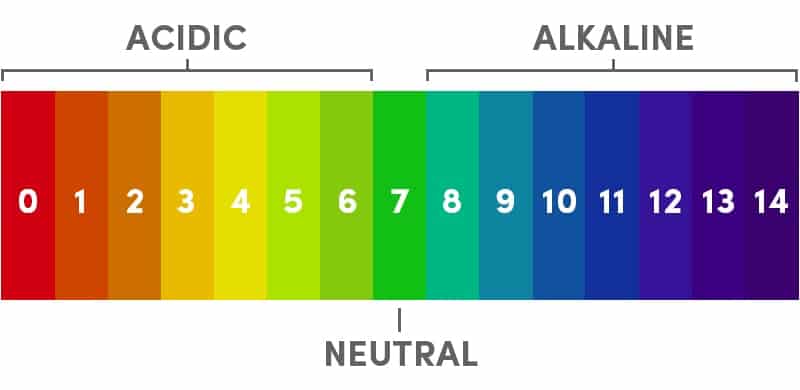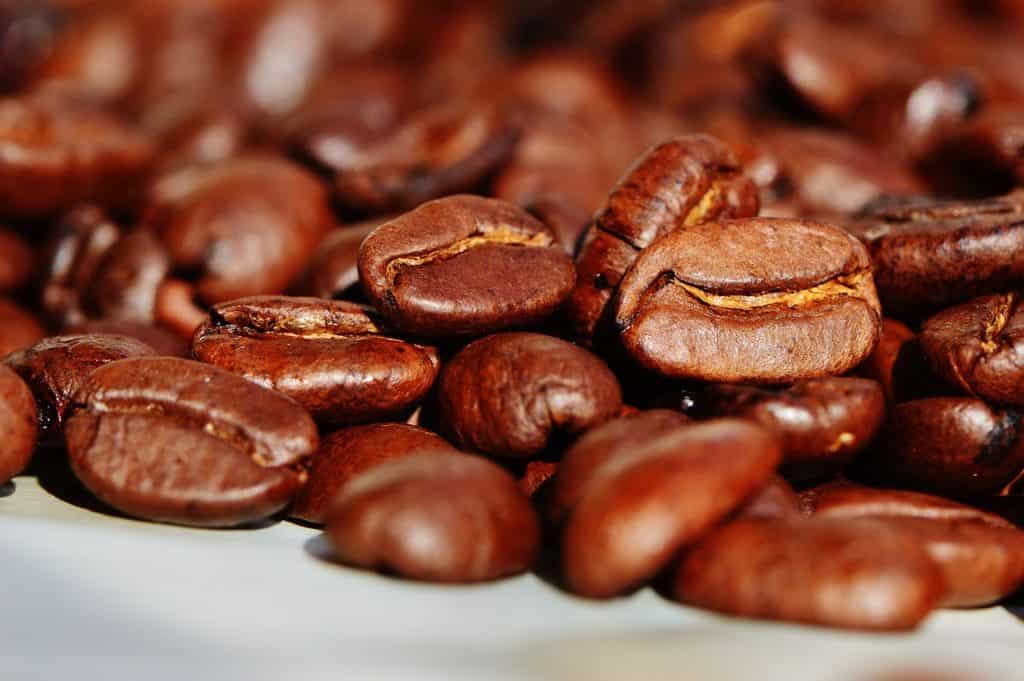
Acidity in coffee is often a misunderstood and underappreciated aspect of the coffee drinking experience. While the term “acidity” may sound negative, it is actually a crucial component of a well-balanced and flavorful cup of coffee.
Acidity provides a bright, tangy taste that adds liveliness and balance to the coffee’s flavor profile. It is not related to the pH level of the coffee, but rather to the perception of sourness or sharpness on the tongue.
The level of acidity in coffee is influenced by various factors, including the type of coffee bean, the roast level, and the brewing method.
Therefore, in this post I am going to talk about acidity in Coffee, what it is, the types, how it affects the taste and where the most acidic coffees come from and why. Ready to get started? Lets go!
What is Acidity in Coffee?
Acidity in coffee refers to the bright and tangy taste that is often described as “bright”, “tangy”, or “tart”. It is not related to the pH level of the coffee, which is neutral to slightly acidic, but rather to the perception of sourness or sharpness on the tongue.
This perception is caused by certain organic acids that are naturally present in coffee beans. These acids contribute to the overall flavor profile of the coffee and can have a significant impact on its taste.
Coffee has a natural degree of acidity but much less then what is commonly thought. Coffee has less acidity then juices and some sodas and can be further reduced when you drink a coffee that has low acidity to start with.
However when most coffee drinkers hear the word “acid” they tend to think of taste characteristics like bitterness and sourness. Too much acidity can be hard on the stomach, but as we shall see, there are potentially “good” and “bad” acids in coffee.
But what about coffee acidity? Is it good or bad? And if we are worried about too much acidity, what can we do about it? Are there low-acid coffees?
Can Acidity in Coffee be Harmful?

The short answer is “no.” The good acids (we’ll explain below) are vital to the coffee. Further, coffee gets a bad rap: it actually has less acidity than that other breakfast staple – orange juice – and less acidity than beer or soda. Not to bring up bad memories of High School Chemistry 101, but coffees average a pH of around 5.0. (You remember the pH scale, right?)
What are “Good” Coffee Acids?
Not to get too technical, but the acids in coffee can be divided into organic acids and chlorogenic acids. Let’s think of the former as the “good” acids and the later as the “bad” acids.
Throughout the entire process from bean to cup – growing the beans, processing and roasting them, grinding them, and brewing them, the aim is to minimize the bad acids and accent the good ones.
Generally speaking, darker roasts will have more of the bad acids and lighter roasts will allow more of the good acid flavors to come to the front.
Again, at the risk of sounding like a wine sommelier, here are 4 major good acids and the tastes they add to coffee:
1. Acetic
Is an organic good acid but may add a bit of vinegary taste to the brew
2. Citric
Is an acid we are all familiar with from oranges, lemons, and limes
3. Malic
This is the acid you find in green apples. It adds smoothness and crispness to the brew
4. Tartaric
This is the acid found in grapes and bananas; it imparts those flavors
Why Are Some Coffees More Acidic than Others?

The level of acidity in coffee is influenced by various factors, including:
Type of coffee bean
Different coffee varieties have varying levels of natural acids, which can affect the overall acidity of the coffee. For example, coffees from Central and South America are generally known to have a brighter, more acidic taste compared to coffees from Africa, which tend to have a lower acidity and a sweeter, fruitier flavor profile.
Roast level
The roast level can also affect the acidity of coffee. Lighter roasts tend to have a higher acidity, while darker roasts have a lower acidity and a more roasted flavor profile.
Growing conditions
Coffee grown at higher altitudes, in soil with a low mineral content, or in areas with a lot of rainfall, tend to have a higher acidity compared to coffee grown at lower altitudes, in soil with a high mineral content, or in areas with less rainfall.
Brewing method
The brewing method can also impact the level of acidity in coffee. For example, drip coffee is known to have a lower acidity compared to pour-over or espresso, which have a higher acidity.
It is important to note that the level of acidity in coffee can also be influenced by other factors, such as the age of the beans and the brewing time.
How Does Roasting Affect Acidity?
The roasting process has a significant impact on the ratio of good to bad acids and the total amount of acid. Roasting cannot add flavors that aren’t present in the raw beans, but they can enhance the flavors that are there.
As a general rule, the lighter the roast the more the natural flavors of the good acids come out. It takes skill to make a darker roast without the coffee turning bitter. If acidity is a worry, stick to darker roasted coffees or coffee types that are not very acidic. For example, coffee from Brazil or Sumatra.
Next comes brewing. If you buy whole beans and grind them yourself ( highly recommended) remember that the finer the grind the quicker the extraction takes place. (Extraction is the technical term for the process in which the flavors of the beans are imparted into hot water.)
A course grind helps bring out good acid flavors but too fine a grind can cause bitterness. There is also a perfect temperature to brew: if the water is too hot the extraction will be faster with higher acid; if the water is not hot enough the result will be a more mellow blend with lower acidity.
Depending on your coffee brewer, you might be able to experiment with water temperatures between 195 -205 F for pour over or immersion coffee. (Some coffee kettles will have a way to set the maximum temperature or you can use the standard of 30 seconds off boil. Start with a relatively coarse grind, high temperature, and short brew time and experiment from there.
Where Does The Most Acidic Coffee’s From?

The coffees with the best balance of good acids and minimal bad acids tend to come from highland areas. This is not because of the altitude itself, but rather because the cooler temperatures at altitude tend to produce coffee beans with more good acids. Let’s take a world tour of specialty coffees and talk about acidity, starting with the USA:
Kona (Hawaii, USA)
America’s best coffee is grown on volcanic slopes and can be roasted medium to bold. It is fairly rare and can be a bit pricey.
Central America
Costa Rica is a pioneer in organic and fair trade coffees. Fair trade may not make the coffee taste any better but it might make you feel better about your coffee. Also grown at high altitude, Nicaraguan coffees tend to be smooth and filled with low-acid flavor notes;
South America
Colombian coffees grown on the slopes of the Andes tend to be rich in citric acid accents. There are many low-acid Columbian coffees on the market;
Kenya and Ethiopia
Kenya’s best coffees come from the White Highlands north of Nairobi. (Side note: the colonial British selected Nairobi as the capital because it was at too high an altitude for malaria mosquitos). It was bad for mosquitos but great for coffee with a strong citric acid note. The best Ethiopian coffees also come from high altitude and can have a sparkling flavor;
Jamaica
Jamaicans will tell you – and it is hard to argue with them – that coffee grown in the Blue Mountains is the best in the world. (Side note: The Japanese agree, and buy vast quantities of Jamaican Blue Mountain, driving up the price and spurring imitation versions.) Bags of Jamaican Blue Mount coffee make great tourist gifts.
Final Thoughts
Coffee tends to get more acidic (in a bad way) and more bitter as it sits in the pot, so judge the coffee and the results of the brewing process, whether yours or the barista’s. Don’t judge a coffee that has been sitting on a hot plate for an hour.
Finally: experiment! Now that you know what to look for in the way of flavors and good acids, you have a world of coffees and brewing techniques to try.

